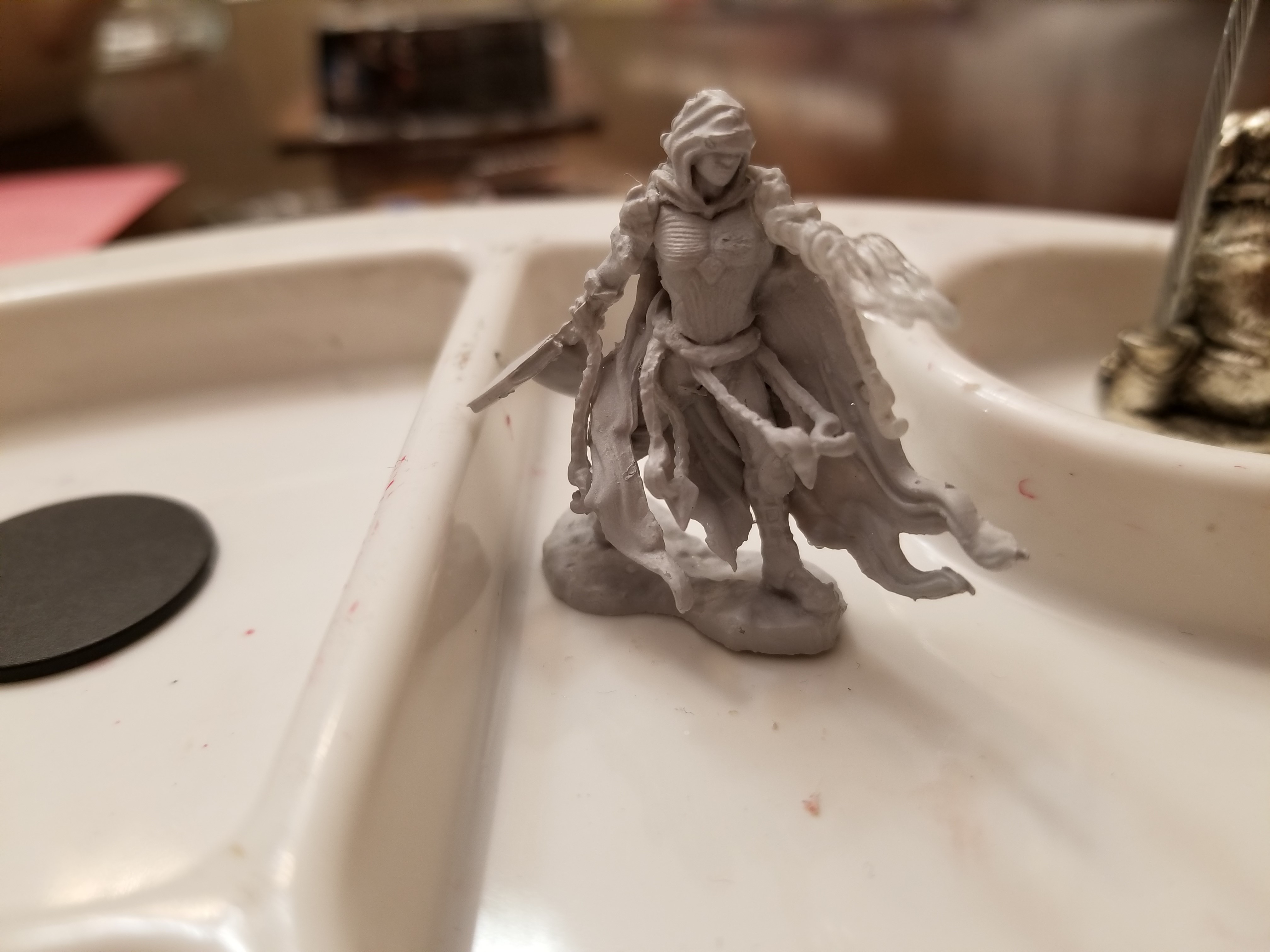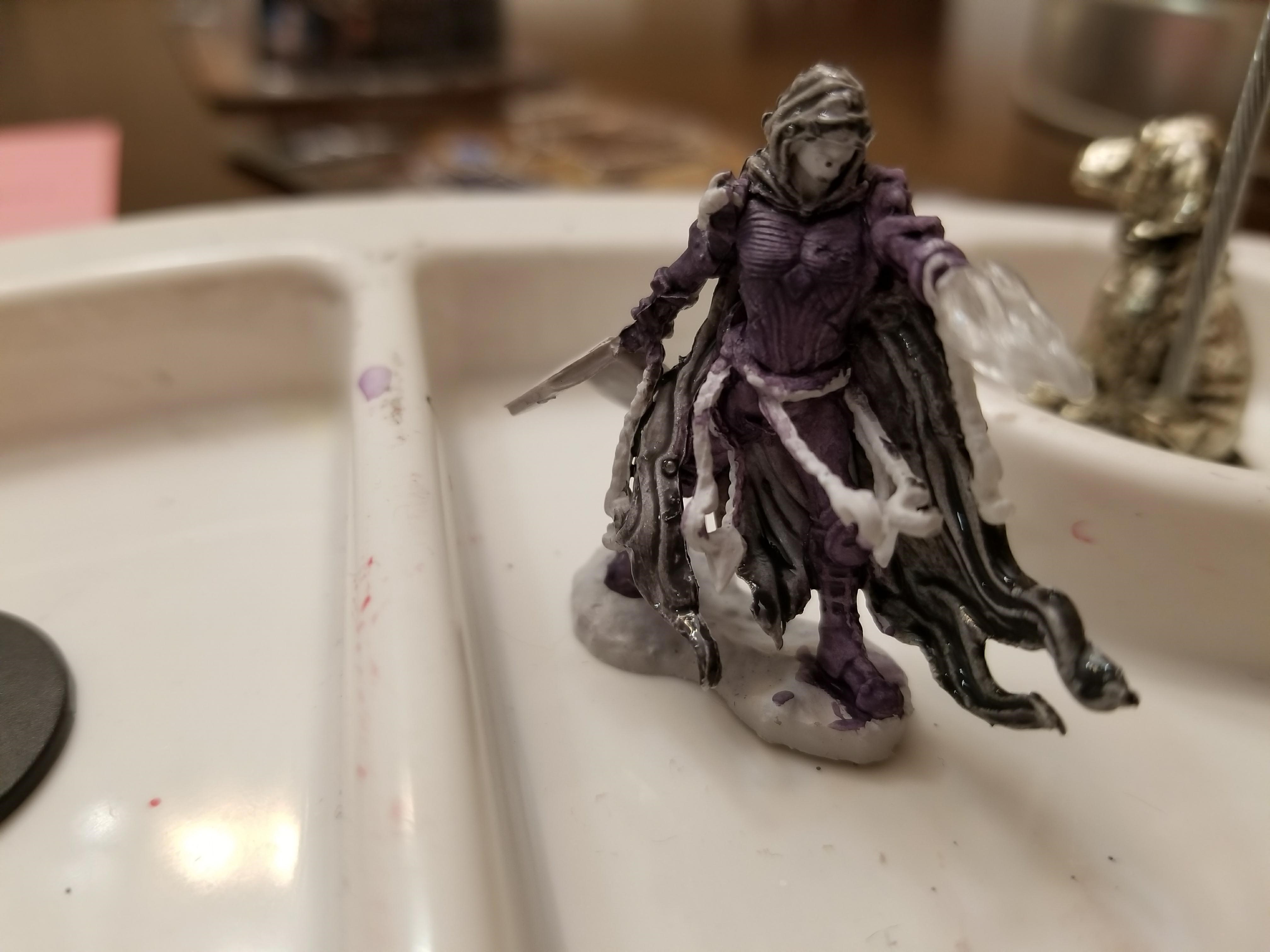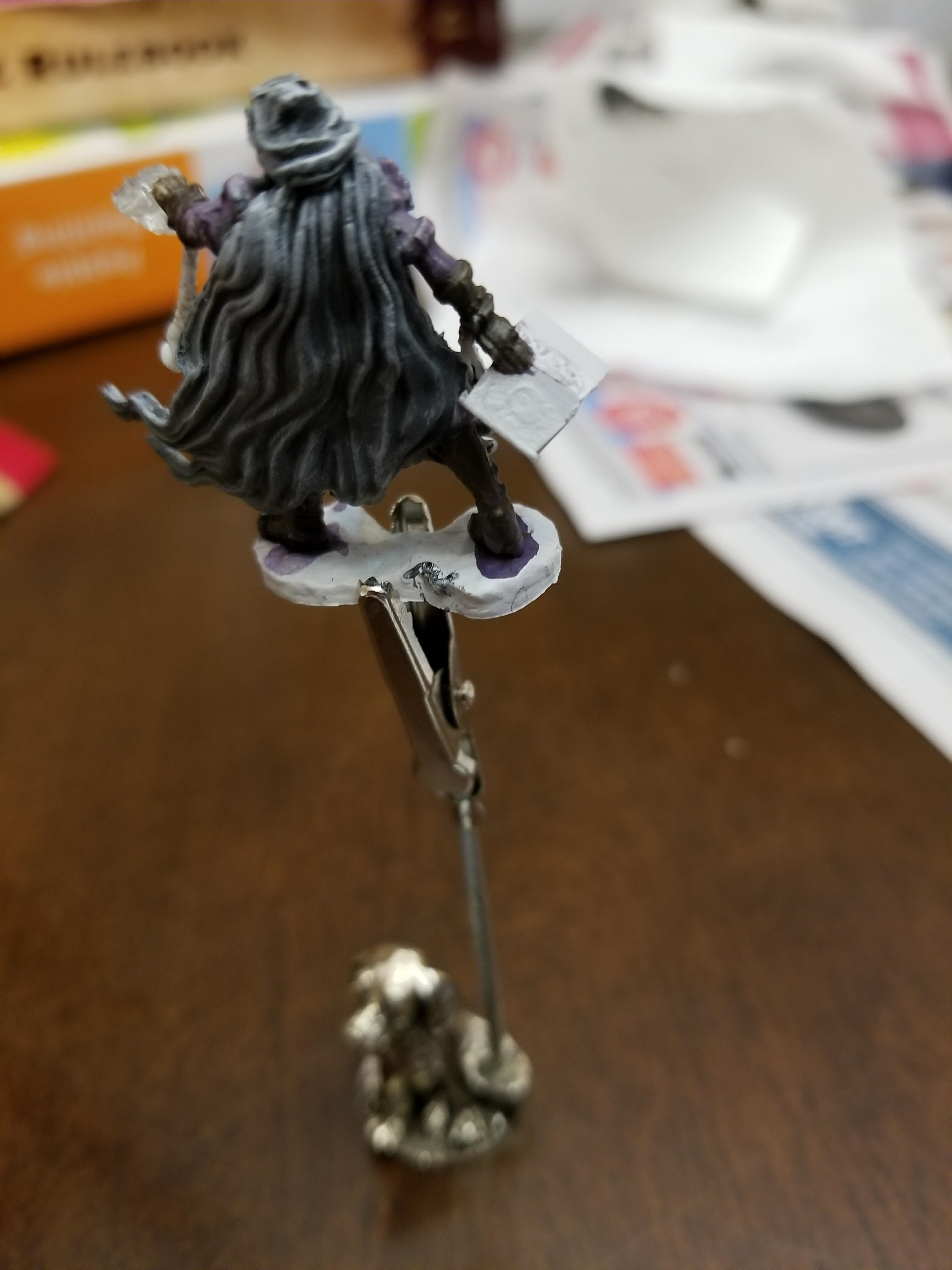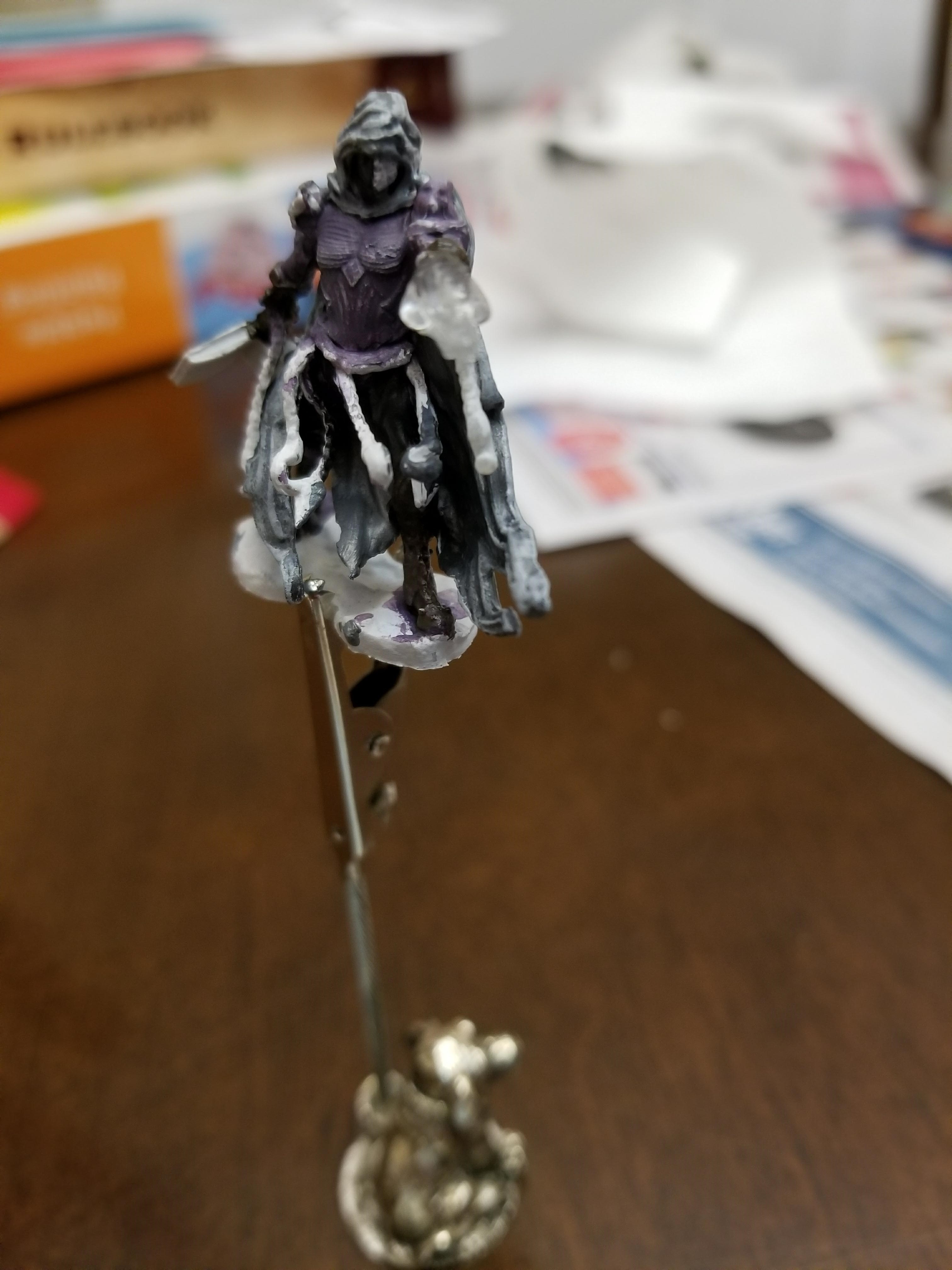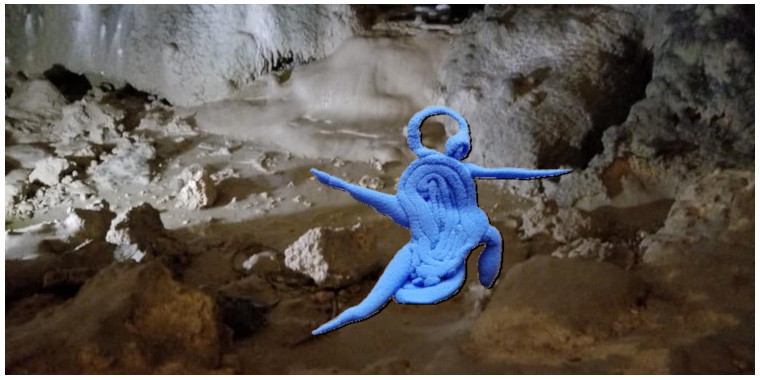Paint 2 Play is a new column of as yet undetermined frequency in which I, the Know Direction Network’s director of content Ryan Costello, pick an unpainted miniature in my collection and paint it with a specific mechanical purpose in mind. I could be painting a PC, NPC, or monster for Pathfinder 2e. Each article will feature my process painting the miniature and determining its game purpose. The goal is to work through my unpainted miniatures, further familiarize myself with 2e’s rules, and improve my painting skills through practice. That last one was no one of the original goals, but after painting this installment’s miniature I realized how out of practice I was.
The Miniature
I picked up a pack of WizKid’s Pathfinder branded Deep Cuts miniatures called Evil Wizards at PaizoCon a couple of years ago. I wanted to check out the then new Deep Cuts super detailed, pre-primed miniatures, and I’m enamored with translucent plastic*, so the Evil Wizards and their translucent spell effects appealed to me. However, I rarely play casters and I rarely paint miniatures unless it’s for a PC, so the Evil Wizards sat unopened until recently.
*when it comes to action figures and miniatures. Tupperware and packaging doesn’t have the same effect on me.
Although this is technically a Pathfinder product, there’s nothing specifically Pathfinder about either miniature. No Lost Omens iconography, or Pathfinder-specific representation of classic fantasy characters. The depiction of wizards wielding open spell-books mid-combat is even contrary to now two editions of the game. However, the two-pack’s Medium humanoid, in medium armour adorned with chains translated nicely into a Hellknight Signifer from The Order of Chains. Struck with mechanical inspiration, I went about building this character.
The Build
Like most Pathfinder enthusiasts, I had my Hellknight phase. However, mine was fairly early in Pathfinder’s existence. If Signifers were already an established part of Hellknight lore, they either stood out of focus or I just missed them. Turning this evil wizard into a Signifer is the closest I’ve looked at the casting branch of the mortal imitators of Hell’s military.
Mechanically, this is my first time playing with 2e archetypes. Plural. I don’t have to worry about the rarity since this character is destined to be an NPC, but I do have to meet the Signifer’s prerequisites, which includes another archetype feat: Hellknight Armiger Dedication.
Meet The Prereqs
I started with the Signifer prerequisites and worked backwards:
- Spellcasting class feature
- Hellknight Armiger Dedication
- Lawful alignment
- Member of a Hellknight order
- Passed the Hellknight Test
The last three are easy (and personally, the last two feel more like they should be Access entries rather than prerequisites). Of the two remaining prerequisites, Hellknight Armiger Dedication is the most involved, as it includes its own suite of prereqs:
- Member of a Hellknight order
- Trained in heavy armor
- Trained in your order’s favored weapon
Turns out, Hellknight Armiger Dedication wasn’t the most complicated prerequisite to meet.
Spellcasting Class Feature
Because I needed the ability to cast plus armour and weapon training, I figured I would multiclass. Either Fighter with a Sorcerer or Wizard Dedication, or Sorcerer or Wizard with a Fighter dedication. That’s when I started to find Spellcasting Class Feature less straight-forward than I thought. Sorcerer and Wizard Dedications on their own grant cantrips, but no 1st level spells. If I went this route, do cantrips count as spellcasting? And does casting gained from archetype feats count as a class feature?
Because you cannot select another dedication feat until you have gained two other feats from your existing archetypes (unless the archetype has a specific exception, more on that later), I realized that multiclassing was too long a road to qualify for another archetype. So I looked at classes that could meet the prerequisites on its own. And the Spellcasting Class Feature terminology tripped me up again.
Around this point in building this character I realized that I didn’t need arcane spellcasting, just spellcasting. Maybe I inferred that Signifers are arcane casters, maybe that was loosened up in 2e, I’m not sure. Having divine casters on the table meant meeting the prerequisites would be much easier. Or would it?
Champions get devotion spells, which are focus spells. Does that count as spellcasting? Rogues can take Minor Magic and gain the ability to cast a couple of cantrips. Is that spellcasting?
Word on the Internet is that Paizo is aware of the ambiguity of that prerequisite and are planning on clarifying it in the future. For now, during my investigation, I came across two findings:
- Warpriest cleric is the shortest route to qualifying for the Signifer archetype;
- I am committed enough to my vision of an arcane caster signifer that I’m willing to take a longer route to get there.
Armoured Arcanist
There is no arcane spell failure chance in 2e, so the only obstacle to suiting a sorcerer or wizard up in full plate is training. Gone are the days of dressing a wizard prisoner up in full plate like some kind of ambulant iron maiden! Going from untrained in all armour to trained in heavy armor requires taking the Armour Proficiency general feat three times. I went with human ancestry so I could take General Training and Versatile Heritage at 1st level, giving me two general feats that went straight to armour. At 3rd level I took Armour Proficiency again as my general feat, and at 5th level I took General Training as my ancestry feat to get the Weapon Proficiency general feat, which I used to get proficiency with the flail. If I was actually playing this character from level 1, I’d have probably taken Weapon Proficiency at 1st level and put off the third Armour Proficiency until 5th.
By now I’d decided on going sorcerer over wizard for a few reasons:
- I prefer spontaneous casters;
- Sorcerers start trained in all simple weapons, meaning I’d only need one Weapon Training feat and not two;
- Signifer synergy.
At this point I should point out that all my work to qualify for Signifer begins and ends with the thought that the miniature looks like a Signifer. Signifer Dedication gives a few bonuses to social skills, including expert rank in Intimidation (oddly without even being trained in Intimidation as a prerequisite). The feats it unlocks aren’t especially amazing or part of my plan for this NPC. I honestly can’t even project how effective this character is, but at least the combination of lore and mechanics gives me an idea for what role he’ll play in my campaign.
Who Is This Mini Character?
Hellknights are super into the law and the Order of the Chain is super into capturing people, so my early idea was some kind of magical Judge Dredd. This wandered over to the idea that he was a wizard hunter, but that’s been done. However, it inspired an idea I fell in love with:
Mathus Steen: Bard Hunter.
It might come off as a joke at first, but the more I thought about it the more I liked it. There’s a reason bards had the “any nonlawful” alignment restriction in D&D 3.5; the prototypical bard is a rebel rousers, inspiring others to base, lawless actions. Nothing would threaten or at least frustrate Hellknights more than bards.
I don’t think this reduces one of the campaign setting’s most intriguing organizations to the fun police or a bad guy from an 80s dance movie. I think it elevates the threat level of a party foil. The party might chuckle at someone who dedicated their life to hunting bards, until the chains start rattling. Speaking of 80s dance movie villains, I think John Lithgow, the bad guy from Footloose, is the perfect stunt casting for this character.
Painting the Miniature
I imagined the painting of this miniature to be as much a part of this article as the build. Sadly, I never felt like I got past the basic stages. I may have started with too ambitious a miniature. I’ll keep that in mind for future Paint 2 Play installments.
A Few Last Notes
I like this process. I’ve said before how I am not a visual person. Normally when I try to find a miniature to represent my character, I have to settle on a plastic or pewter shaped receptacle for the amorphous concept in my head. But starting with a visual and drawing a concept from it? As fun as it was inspirational.
I used Pathbuilder 2 to manage the mechanics of the build. It was a bit off with the prerequisites for the dedication feats, but otherwise made building this character much easier.
I didn’t need to take additional Hellknight Armiger archetype feats as there is a loophole that allows me to take other Hellknight dedication feats right away. That meant I could qualify for Signifer by 8th level.
The Signifer dedication makes a big deal about the mask it gets, but there’s the miniature’s face had facial features. I decided to call him a worshiper of Nethys and paint his face like the mask of Pathfinder’s god of magic.
At one point I wondered if there were dwarf ancestry feats to fast track some of my armour proficiencies. Then I looked at the miniature and knew that wasn’t an option.
I thought about replacing the spellbook with a flail, but I felt so out of practice after painting the miniature that I gave up on the idea of modifying it.
The evil wizard has a hellish skull epolette. I came to the conclusion that this was the skull of an ancestor who corrupted the Steen bloodline. This, plus the granted spell matching the miniature’s spell effect, gave me my bloodline: diabolic. Meaning I also had my spell tradition: Divine. Heh.
UPDATE: It’s Signifer, not Signifier. No i at the end. Thanks to Adam Daigle for pointing that out.


